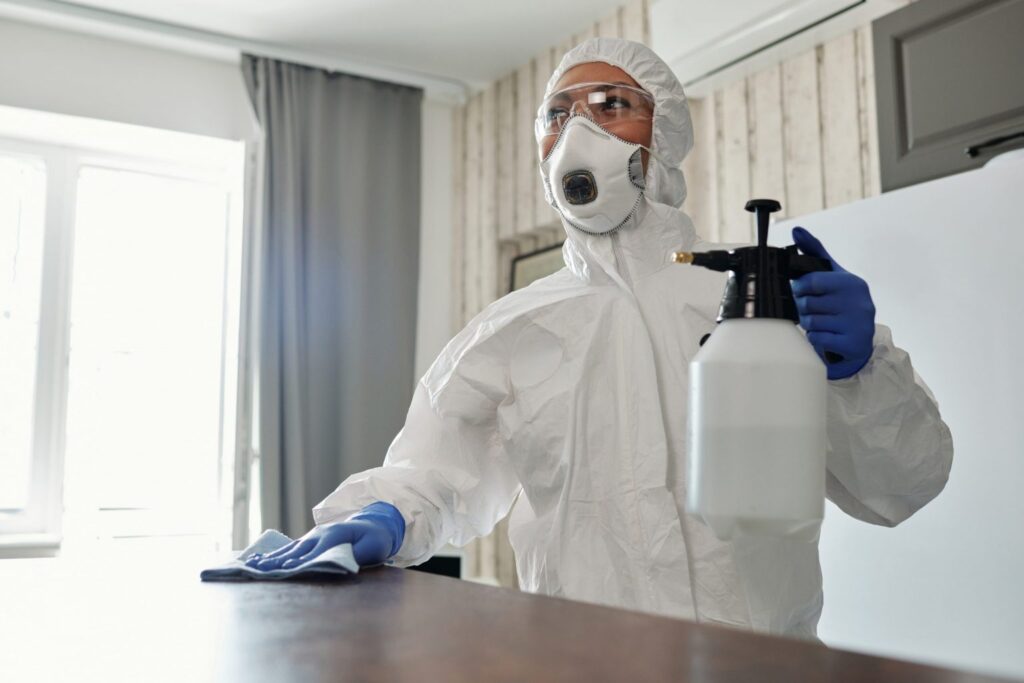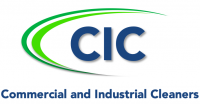cic cleaners- COVID-19 Cleaning Service
COVID-19 Cleaning Service
What surfaces should you disinfect and clean during the COVID-19 pandemic
The pandemic is a global epidemic that has infected people around the world. The virus, COVID-19, is spread through contact with bodily fluids and secretions. It can also be transmitted through contamination of surfaces or objects like hand rails and door handles.
Surfaces should be disinfected by using a mixture of bleach and water in the ratio of 1:10 to kill the virus.
Cleaning and decontamination of Workplaces within the context of COVID-19
The COVID-19 Disease: Infection Prevention and Control Guidelines of Department of Health stated that “cleaning the environment” was paramount. The Practical Manual for Implementation of National Infection Prevention and Control Strategic Framework describes the procedures for deep cleaning.
This is only for an area of the workplace that was occupied previously by someone with COVID-19. It will allow for the reoccupation of this area as soon possible to ensure essential services can resume. Deep cleaning includes cleaning walls, ventilation shafts, grills, storage areas, floors and ceilings in all non-clinical and clinical areas. An incident-based risk assessment approach must be used in areas where someone was positive for COVID-19. This is described in the Department of Employment and Labour’s Direction and the Department of Health’s Guideline.
Important terms
* Decontaminate: Remove pathogens from an object so that they are safe to use, handle, or dispose of. The term umbrella refers to pre-cleaning, followed by sterilizing, sterilizing, or disinfecting.
* Clean: Water, soap, and mechanical friction to reduce pathogen loads, organic matter, and dirt. It does not kill pathogens.
* Sanitize: Using either cleaning or “lower-level” disinfection to reduce the risk of infection.
* Disinfect: This is a type of decontamination that uses disinfectants to kill > 100% of pathogens. This can be easily deactivated with organic matter and dirt. * Sterilize is a type of decontamination that uses heat and steam, often via autoclaving.
To reduce pathogen load, organic material and dirt, first clean. Then disinfect to kill any remaining pathogens.
* Routine cleaning and disinfection is recommended to reduce the spread of COVID-19.
If approved disinfectants don’t exist…
* 70-90% ethanol or other types of alcohol (e.g. Activities are similar with isopropyl alcohol
* Use chlorine solution (sodium/calcium hypochlorite aka bleach/jik)
* 0.1% (1000 ppm) for general environmental disinfection
* 0.5% (5000ppm) for bodily fluid and blood spills
* Hydrogen peroxide at >= 0.5%
* Contact time for the above disinfectants is 1 minute
* Contact time: The time it takes for disinfectant contact to reach the surface to kill pathogens
* The type of surface to clean will determine the type of disinfectant. Contact manufacture if you are unsure.
Terminal/Deep Cleaning when COVID-19 Case Identified/Suspected
* National Department of Health (NDoH), WHO CDC, EPA, CDC etc. Fogging is not recommended:
– Disinfectant inactivated with organic matter (cleaning still necessary)
– May not be able to see surfaces that are shielded by objects/folded fabrics, etc.
– Inhalation of disinfectant to workers and the community is increased.
The WHO and NDoH recommend deep cleaning by wiping disinfectant on the surface after thorough cleaning. This is a different from regular cleaning as deep cleaning involves cleaning all surfaces and disinfecting them.
– No formal, accredited training required.
* Deep cleaning is not necessary if more that 7 days have passed since the last time an ill person was in the facility.
– Possibility for viable (i.e. If the possibility of SARS-CoV-2 infection is present, it would be minimal. * Deep cleaning is only necessary if essential services are to resume. In less than 7 days
. A COVID-19 positive person must have spent considerable time at work, touched many surfaces, equipment, and objects, and had close contact to several coworkers.
If a positive COVID-19 case has passed through the workplace, it is not necessary to clean or spend much time in face-toface communication.

What preventative measures can you take to avoid COVID-19?
Physical or social distancing, ventilation, indoor ventilation, covering coughs and sore throats, hand washing and keeping hands clean from the face are some of the preventive measures. To reduce the risk of transmissions, public places should be equipped with face masks and coverings.
When only a Professional will do, CIC Cleaners COVID-19 Cleaning Services is your #1 choice...
Which areas should be prioritized to disinfect in non-healthcare settings?
To reduce the risk of COVID-19 virus contamination in nonhealthcare settings such as the home, office and gyms, public buildings, faith-based community centers, markets, transportation, business settings and restaurants, disinfection practices are essential. High touch surfaces should be identified in these non-healthcare settings for priority disinfection. These include door handles and window handles as well as kitchen and food preparation areas, bathrooms surfaces, toilets and taps and touchscreen personal devices.
What surface disinfectants are effective in fighting COVID-19 outside of a health care setting?
Non-health care settings may use sodium hypochlorite (bleach/chlorite) at a recommended concentration 0.1% or 1,000ppm (1 Part of 5% strength household bleach to 49 Parts of water). For surface disinfection, alcohol at 70-90% may also be used. To remove dirt and grime, surfaces should be washed with soap or water. Then disinfect the area. To avoid spreading the dirt to other areas, cleaning should be done from the cleanest (cleanest) to the filthiest (dirtiest) first.
Disinfectant solutions should always be kept in opaque containers.
For COVID-19, it is not recommended to spray disinfectants on surfaces in indoor spaces. Disinfectants should only be applied to surfaces using a cloth or a wipe that has been soaked in the disinfectant.
What precautions should people take when using disinfectants.
When using disinfectants, it is important to minimize your risk.
-
To avoid damage to surfaces, the disinfectant’s concentration and other toxic effects should be chosen carefully.
-
Avoid mixing disinfectants such as bleach with ammonia. These can cause respiratory irritations and possibly lead to fatal gas leakage.
-
When the product is being applied, keep pets and children away.
-
Use fans and open windows to let in the air. If odours become too strong, you should get out of the way. Always prepare disinfectant solutions in well-ventilated areas.
-
After using any disinfectant, even surface wipes, wash your hands.
-
When not in use, keep lids closed. Containers that are not tightly sealed are more likely for accidents and spillages.
-
Disinfectant wipes should not be allowed to children. Children and pets should be kept away from disinfectants and cleaning fluids.
-
If disposable items such as gloves or masks are used in cleaning, throw them away. Avoid reusing or cleaning.
-
Use disinfectant wipes only to clean your hands.
-
Rubber gloves, waterproof aprons, and closed shoes are the minimum personal protective equipment recommended for disinfecting in non-healthcare settings. To protect your eyes from chemicals or splashing, you may need to use medical masks and eye protection.
